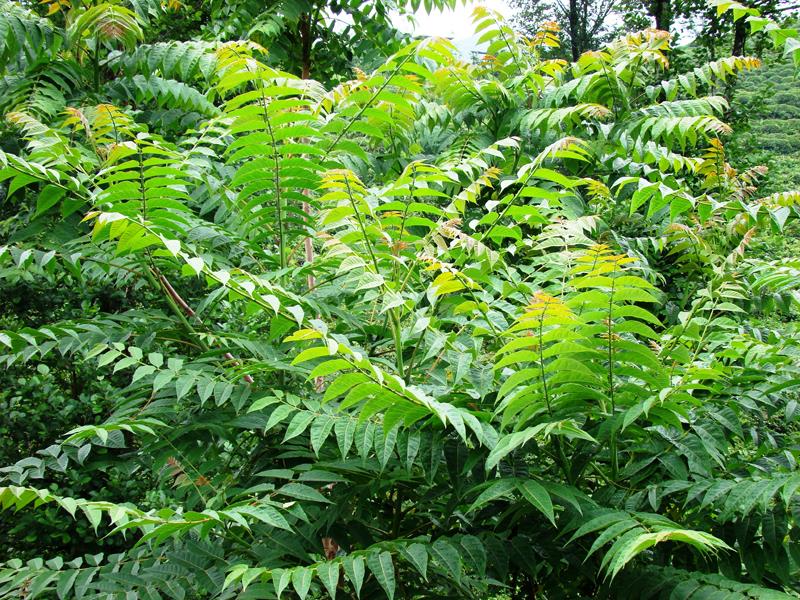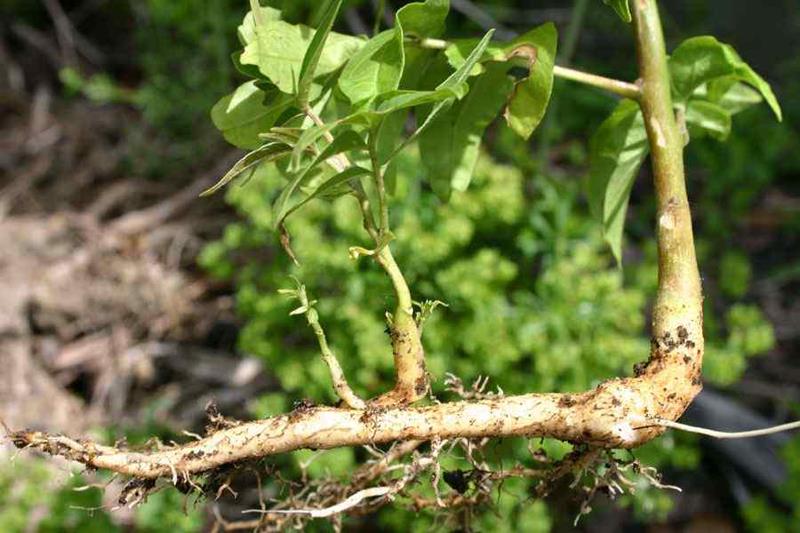KNYSNA NEWS - The tree of heaven, as it is known, was imported from China as an ornamental plant many decades ago, but despite its name it has quite a devilish character in any garden.
The quick growth, attractive foliage and resistance to pests and diseases made it a desirable tree for challenging environmental conditions in many parts of the world. The plant escaped cultivation and can now be found in the USA, Europe, Africa and Australia. If you travel throughout Europe, particularly the south of France and Spain, you'll see whole areas, especially urban, swallowed up by the tree of heaven.
This invasive species has the ability to grow in poor soil and under stressful environmental conditions such as heavy clays and other soil with low nutrient and oxygen content. High seed production (325 000 seeds per female tree) and viability, plus vegetative sprouting from the roots, increase this plant's invasiveness.
In our midst
But you don't have to travel to Europe to see Ailanthus altissima – Knysna has plenty of them. They adorn our roadsides, disturbed open spaces and even stand proud in many gardens. They thrive and multiply, colonising large sways of land without any human intervention.
The distinctly sinister side of this tree is that it produces a chemical known as ailanthone that prevents the growth of other plant species nearby, has an unpleasant smell and sends out a mass of suckers that smother other plants. It has a very thick underground root system that puts up shoots every 5-10cm creating very dense thickets. The tree initially grows by as much as 4m a year – more than a centimetre a day – although between 1m and 2m is the norm.
The tree's roots are extremely strong, it spreads so rapidly that they can cause havoc in urban areas, pushing up through buildings, breaking up paving, walls and sewer systems. The tree of heaven is capable of resprouting from both root fragments and exposed tree stumps.
Physical contact with this tree, particularly with the leaves, can lead to skin irritation and if left untreated, can cause severe itchiness and a persistent rash resulting in high levels of pain and discomfort.
What does it look like?
Ailanthus altissima is a medium to large-sized tree. It has smooth, grey bark with compound leaves that are alternate, odd-pinnate, with 11 to 25 lanceolate leaflets. Most leaflets have one to three coarse teeth near their base. Mature trees can reach 24m or more in height, and flowers occur in panicles at the ends of branches and the male flowers produce a strong odour, described as the smell of burnt peanut butter.
 Ailanthus altissima. Photo: Supplied
Ailanthus altissima. Photo: Supplied
The leaves, when crushed, also produce a distinctive odour. Seeds are centred in a papery sheath called a samara. The samaras are slightly twisted or curled and twirl as they fall to the ground. The wood of Ailanthus altissima is soft, weak, coarse-grained, and creamy white to light brown in colour.
Manual and mechanical control
Early detection and removal of seedlings before the tap root develops is the most effective control strategy. Pulling or digging must remove the entire root system, including all roots and root fragments, to prevent regrowth. Suckers from a preexisting lateral root are nearly impossible to remove by manual methods.
Cutting or mulching without a follow-up herbicide treatment is not effective since the tree produces sprouts and root suckers from a cut stump. Continued removal of above ground growth may exhaust root reserves under heavily shaded canopy.

Invasive Status in South Africa: *Nemba category 1b
Action: Remove, destroy, follow up
* National Environmental Management: Biodiversity Act
'We bring you the latest Knysna, Garden Route news'
















